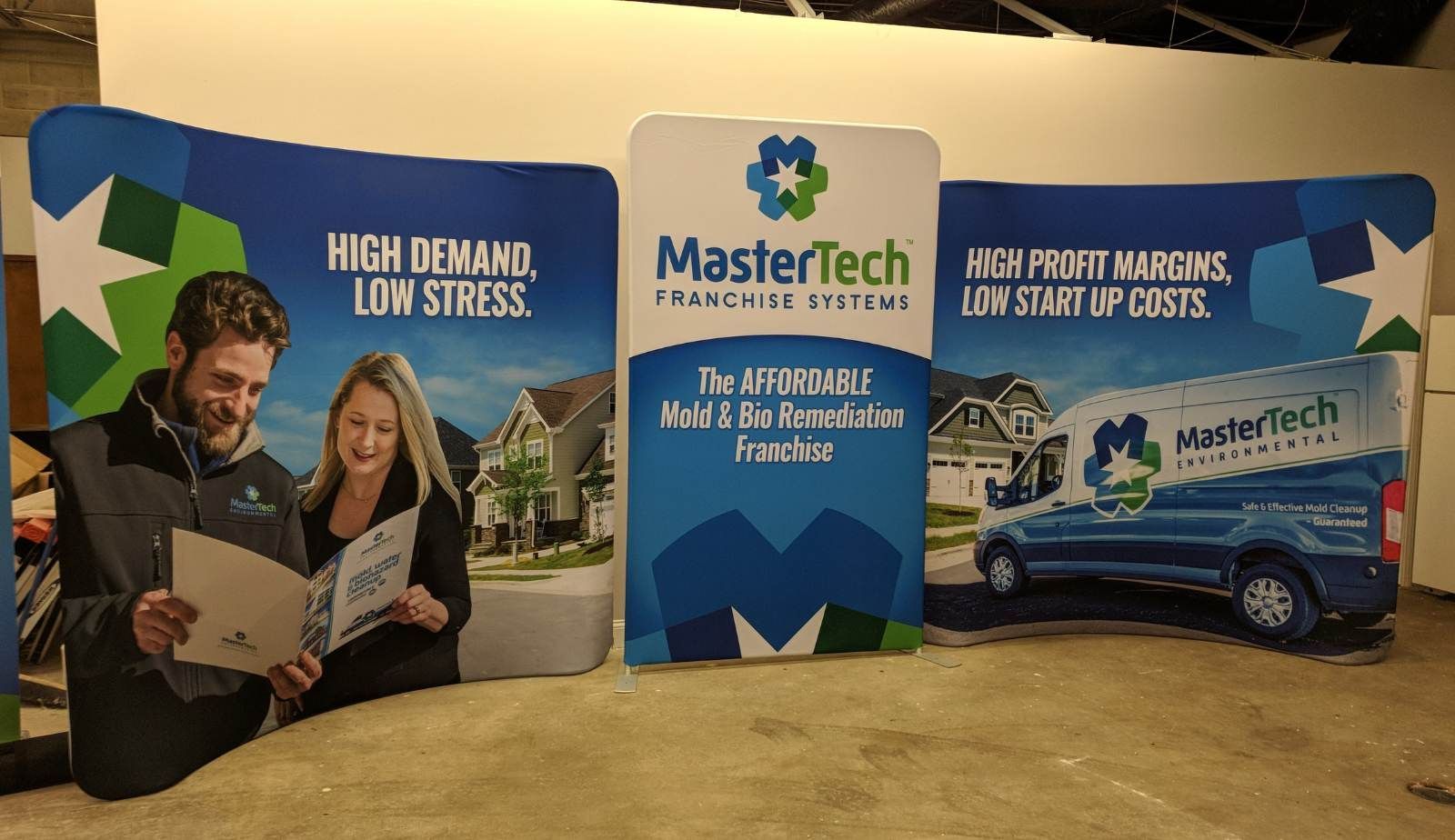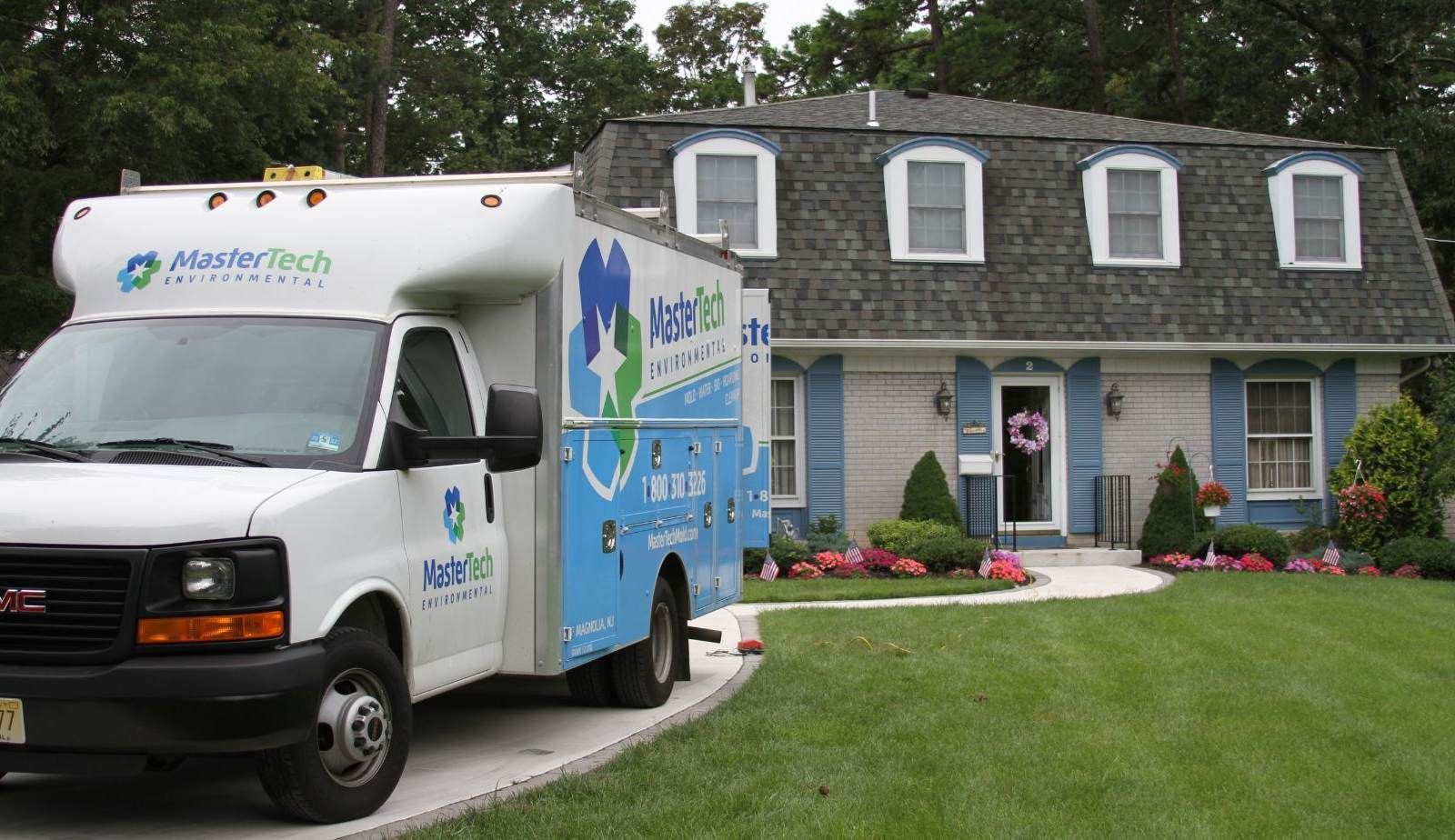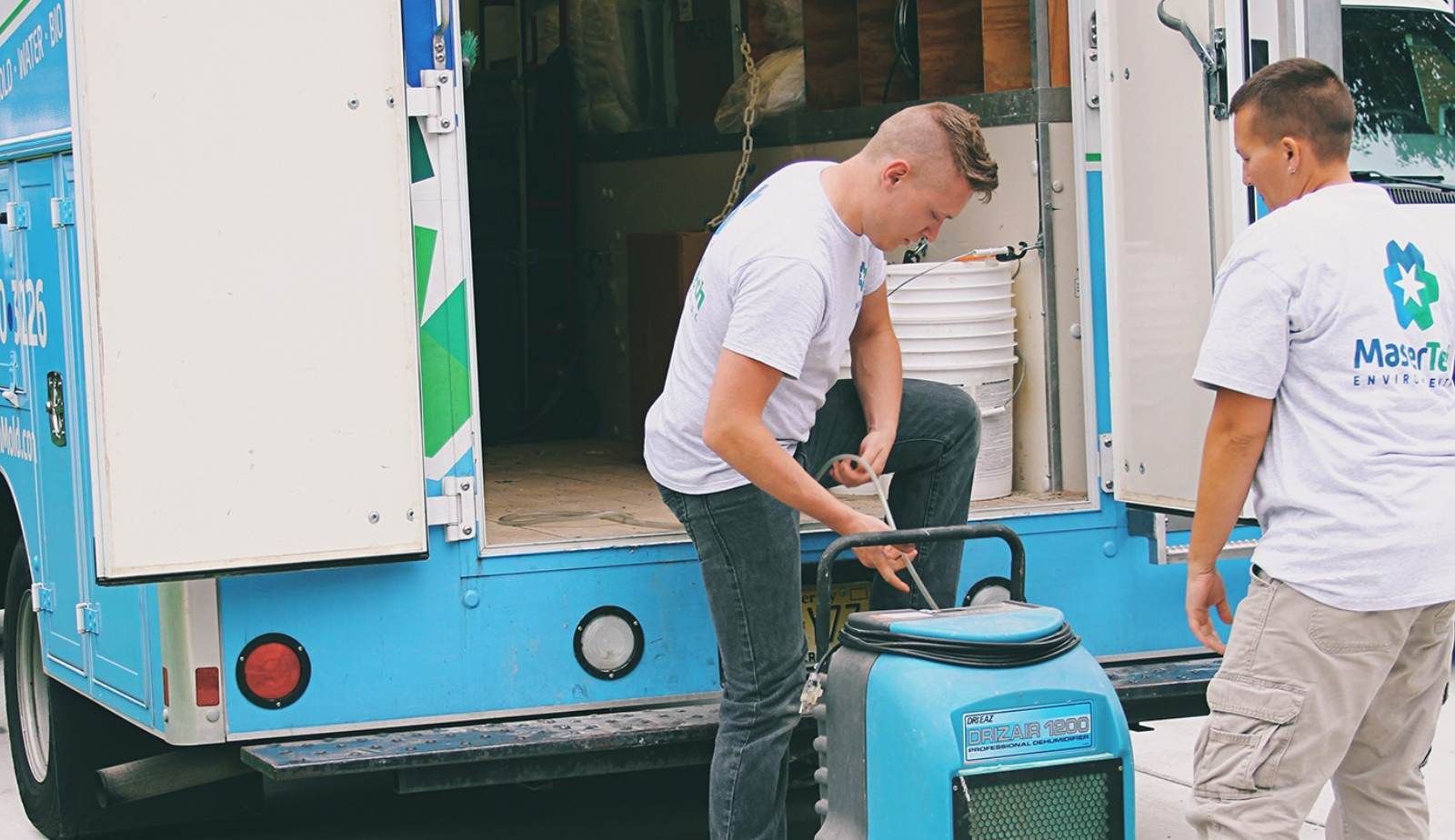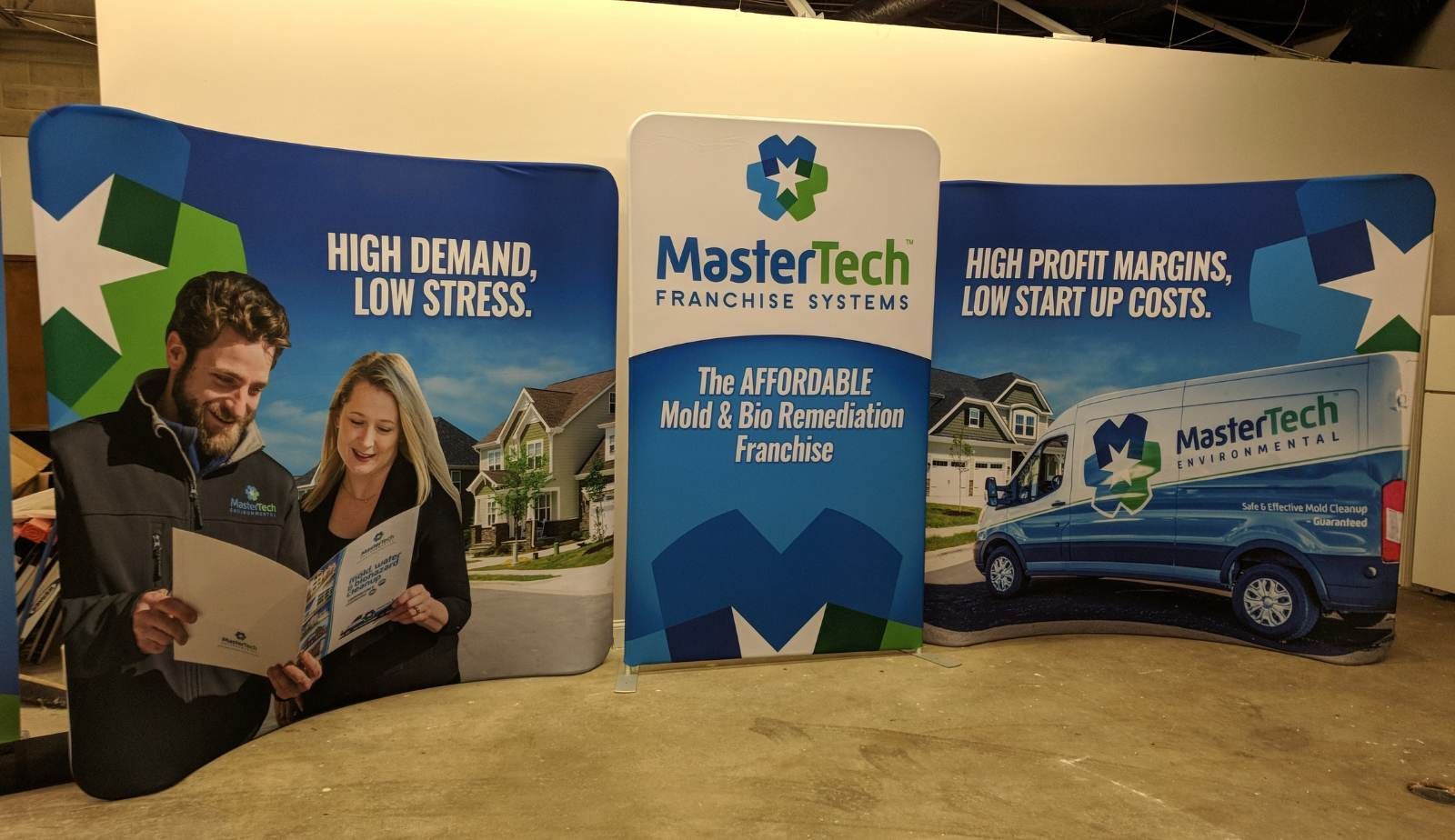
Scaling a restoration business is a significant challenge, particularly in the mold, water damage, fire damage, biohazard cleanup, and hoarding cleanup sectors. Mastertech Environmental has successfully navigated this journey, transforming from a single truck operation into a comprehensive team. Their ability to scale without sacrificing margins stems from strategic planning, efficient operational practices, and maintaining high service quality.
Understanding the nuances of the restoration industry is critical for owners who aim to expand. Mastertech Environmental's approach combines deep industry knowledge with a commitment to training and equipping their teams, ensuring that every new hire upholds the company's standards. This focus not only enhances service delivery but also retains customer satisfaction, enabling owners to grow their operations sustainably.
As restoration needs continue to rise, business owners can learn valuable lessons from Mastertech's journey. The company's unique strategies demonstrate that growth is attainable without compromising on quality or financial stability. By adopting similar principles, restoration professionals can position themselves for success in an increasingly competitive market.
Mastertech Environmental Growth Journey
Mastertech Environmental has evolved from a single truck operation into a prominent player in the restoration industry. Its growth has been driven by a combination of core values, strategic milestones, and effective leadership.
Founding Values and Mission
Mastertech Environmental was founded on principles of quality and commitment. Its mission prioritizes delivering safe and effective solutions for mold remediation, water damage restoration, and biohazard cleanup. The focus on customer satisfaction has created trust within communities.
This dedication to doing good work has positioned Mastertech as a reputable franchise choice. The company places great emphasis on using advanced technology and maintaining certifications to ensure high standards.
Key Milestones in Scaling Up
The journey began modestly, starting as a small mold remediation team. Key milestones in Mastertech's growth include expanding service offerings to encompass water damage restoration and hoarding cleanup.
Franchise opportunities were introduced to leverage the growing demand for environmental services. Noteworthy achievements include reaching significant revenue targets and establishing a network of certified environmental technicians across various regions.
The Leadership Approach
Mastertech Environmental's leadership emphasizes structured training and ongoing support for franchisees. This approach equips owners with the necessary skills to navigate the complexities of the environmental services industry effectively.
Continued support allows franchise owners to maintain high-profit margins while expanding their businesses. Mastertech aims to foster a collaborative culture, encouraging idea sharing and best practices among its franchisee network.
This leadership strategy has been a vital component of their scaling success, ensuring that as they grow, franchise owners remain well-equipped and informed.

Scaling Operations From One Truck To A Full Team
Expanding from a single truck to a full team involves essential steps to build a capable workforce, ensure technician proficiency, and invest in the right tools and technology. These components play a pivotal role in maintaining operational efficiency and service quality.
Building a Skilled Workforce
Hiring and retaining skilled technicians is critical for success. These individuals should possess not only technical expertise but also training in areas like mold remediation, water damage restoration, and biohazard cleanup.
A comprehensive recruitment strategy may include:
- Job Ads: Ensure clarity in job descriptions outlining specific skills required.
- Use of Networks: Tap into industry networks and associations for potential candidates.
- Interviews: Focus on assessing both technical skills and soft skills during interviews.
Establishing a competitive benefits structure can also attract top talent and improve retention rates.
Technician Training and Development
Continuous training is essential for technicians as industry standards and technologies evolve. A well-structured training program can enhance skill sets and foster a culture of safety and compliance.
Key aspects of technician training may include:
- Certifications: Encourage certifications in specialized areas such as hazmat handling and advanced water extraction techniques.
- Workshops: Host regular workshops that cover new methodologies and equipment.
- Mentorship Programs: Pair new hires with experienced technicians for hands-on learning.
This commitment to ongoing education not only improves service delivery but also boosts employee morale.
Investing in Advanced Equipment
Equipping technicians with modern tools can significantly improve efficiency and job performance. Investing in high-quality equipment tailored for specific tasks is essential when scaling operations.
Important equipment considerations include:
- Latest Technology: Utilize advanced moisture meters, air scrubbers, and thermal imaging cameras.
- Maintenance Plans: Implement regular maintenance schedules to ensure reliability.
- Ergonomic Tools: Choose equipment designed with ergonomics in mind to reduce the risk of injuries.
Prioritizing good equipment can lead to faster job completion times and improved customer satisfaction.
Maintaining Margins During Business Expansion
During business expansion, it is crucial to sustain profit margins while managing growth. This involves implementing sound cost controls, optimizing service delivery, and regularly tracking financial metrics. Each of these elements plays a significant role in ensuring a profitable trajectory during the scaling process.
Implementing Cost Controls
Effective cost management is essential for maintaining margins. Businesses can achieve this by conducting regular reviews of their expenses. Identifying unnecessary costs, such as excess labor or inefficient processes, allows for targeted reductions.
Utilizing technology can streamline operations, minimizing overhead. For instance:
- Automation tools can handle scheduling and customer interactions.
- Cost tracking software helps identify spending patterns.
Establishing vendor agreements for materials can also lead to better rates, ensuring expenses align with revenue growth.
Optimizing Service Delivery
Streamlining service delivery can significantly impact margins. This entails refining processes to maximize efficiency without compromising quality.
Training staff to embrace best practices ensures that service is delivered promptly and effectively.
Incorporating customer feedback loops helps identify areas for improvement. Additionally, having a structured approach to project management can reduce time spent on each job, further enhancing profitability.
Using standardized operating procedures minimizes variations and ensures consistent service, which leads to customer satisfaction and repeat business.
Financial Metrics to Track Profitability
Monitoring key financial metrics is fundamental to understanding profit margins. Key performance indicators (KPIs) include:
- Gross Margin: Assessing the difference between revenue and direct costs to identify operational efficiency.
- Net Profit Margin: Evaluating overall profitability after all expenses ensures long-term viability.
Regularly reviewing these metrics allows for quick identification of trends or issues in the business. Using financial dashboards can provide real-time insights that support data-driven decisions, ensuring margins are not only maintained but potentially enhanced during expansion.

Core Restoration and Remediation Services
Core Restoration provides specialized services addressing various property damage scenarios including mold, water, fire, and biohazard situations. Their structured approach ensures professionalism and efficiency in every restoration process.
Mold Remediation Techniques
Mold remediation involves several critical steps to ensure effective removal and prevention of future growth. Core Restoration starts with a comprehensive inspection to identify mold sources and determine the extent of the infestation.
Key Techniques Include:
- Containment: Isolating affected areas to prevent mold spores from spreading.
- Air Filtration: Using HEPA filters to capture airborne mold particles.
- Removal: Safely disposing of contaminated materials, including drywall and insulation.
- Cleaning and Disinfecting: Utilizing EPA-approved biocides to eliminate remaining mold.
- Moisture Control: Implementing measures to control humidity and prevent recurrence.
This thorough approach minimizes health risks and restores a safe environment.
Water Damage Restoration Processes
Water damage restoration is a structured process involving immediate action to mitigate loss and repair damage. Core Restoration begins with an assessment to identify the source of water intrusion.
Restoration Steps Include:
- Water Extraction: Using pumps and vacuums to remove standing water.
- Drying: Employing industrial dehumidifiers and air movers to expedite drying.
- Cleaning and Sanitizing: Treating affected areas with antimicrobial solutions.
- Restoration: Repairing walls, flooring, or structures impacted by water damage.
This meticulous approach helps ensure properties can return to pre-loss conditions efficiently.
Fire Damage Cleanup Strategies
Fire damage cleanup requires expertise to handle smoke and structural damage. Core Restoration implements a systematic strategy to manage both visible and hidden damage.
Key Cleanup Strategies:
- Assessment: Evaluating structural integrity and assessing damage.
- Smoke and Soot Removal: Utilizing specialized cleaners for surfaces affected by smoke.
- Odor Neutralization: Using fogging and ozone treatments to eliminate lingering odors.
- Structural Repairs: Restoring or replacing damaged sections of the property.
These strategies provide a comprehensive solution to restore properties affected by fire damage, prioritizing safety and effectiveness.
Biohazard and Trauma Cleanup Approaches
Biohazard cleanup is critical for safely managing hazardous materials and restoring properties to a safe condition. Core Restoration employs experienced technicians trained in handling trauma and biohazard situations.
Approaches Include:
- Assessment and Planning: Evaluating the scene and devising a cleanup strategy.
- Personal Protective Equipment (PPE): Ensuring that all personnel are properly equipped for safety.
- Decontamination: Utilizing approved methods to sanitize and disinfect affected areas.
- Disposal of Hazardous Waste: Following local regulations for the safe disposal of biohazardous materials.
This methodical approach ensures that properties are cleaned thoroughly while protecting both workers and the environment.
Ensuring Service Quality And Client Satisfaction
Delivering consistent service quality and ensuring client satisfaction are critical for businesses specializing in mold removal, water damage, and other remediation services. Effective strategies in certification, communication, and follow-up can significantly enhance customer trust and loyalty.
Certification and Licensing Standards
Adhering to certification and licensing standards is non-negotiable in the remediation industry. Certifications such as those from the Institute of Inspection, Cleaning and Restoration Certification (IICRC) validate the skills and reliability of service providers.
Licensed technicians are equipped with knowledge of local regulations regarding mold removal and hazardous material handling. This compliance not only assures customers of safety but also enhances service credibility.
In addition, maintaining certifications demands ongoing training. This ensures that technicians remain updated on the latest techniques and technologies in mold remediation and risk assessments.
Client Communication and Support
Proactive client communication is vital for service quality. Effective companies establish clear lines of communication from the initial consultation through project completion. This includes providing detailed estimates and timelines related to services offered.
Regular updates on progress can alleviate client concerns, particularly during difficult situations like disaster recovery. Companies benefit from implementing customer support systems, which allow clients to reach out easily for questions or support.
Moreover, training staff in customer service best practices reinforces the importance of empathy and responsiveness. This fosters a supportive environment, encouraging clients to share feedback, further enhancing service quality.
Warranties and Follow-Up Procedures
Offering warranties and follow-up procedures showcases a commitment to service quality and client satisfaction. Businesses that provide warranties on mold removal services give clients peace of mind, knowing that any recurring issues will be addressed at no additional cost.
Follow-up procedures are equally important; they create touchpoints post-service. This could include calls or surveys to assess customer satisfaction and identify areas for improvement.
Implementing a systematic follow-up process also demonstrates that the company values client relationships beyond the transaction. Keeping clients informed about routine maintenance or inspection services enhances loyalty and trust in the brand.

Specialized Services for Complex Challenges
Complex challenges in restoration require tailored strategies. Specialization enables effective solutions that address specific issues, including hoarding conditions and the urgent need for disinfection and sanitization in contaminated environments.
Hoarding Cleanup Best Practices
Hoarding cleanup involves meticulous planning and execution. Teams should begin with a comprehensive assessment to identify the extent of clutter and potential hazards.
- Establish Trust: Building rapport with the individual is crucial. They should feel safe and understood.
- Plan Methodically: Break the process into manageable phases. Sorting, cleaning, and disposal should occur sequentially.
- Involve Professionals: Engage mental health professionals if needed. Their support aids the individual in coping with emotional challenges.
- Provide Resources: Offer connections to local charities or waste management services for proper disposal of items.
- Follow-Up: After completion, implement a support plan to maintain a clutter-free environment. Continuous monitoring helps ensure lasting success.
Disinfection and Sanitization Protocols
Disinfection and sanitization are vital in restoring safety in environments affected by mold, biohazards, or other contaminants.
- Identify Contaminants: Conduct a thorough inspection to determine the types of pathogens present.
- Select Appropriate Products: Use EPA-approved disinfectants that target specific threats. Follow manufacturer guidelines for effective application.
- Implement Correct Techniques: Apply disinfectants using proper methods, ensuring all surfaces receive adequate coverage.
- Prioritize High-Touch Areas: Focus on frequently touched surfaces like doorknobs, light switches, and handrails. These areas pose higher risks for virus transmission.
- Document Procedures: Maintain detailed records of the cleaning process. Documentation ensures transparency and provides a reference for future cleanings.
These specialized services not only address immediate concerns but also set a foundation for healthier environments.
Technical Excellence: Inspection and Testing Procedures
In the fields of mold, water damage, fire damage, and biohazard cleanup, rigorous inspection and testing procedures are vital. These processes ensure safety and effectiveness in remediation efforts, ultimately protecting both property and health.
Mold Inspection Process
The mold inspection process involves a systematic approach to identifying mold presence and its potential sources. Initially, trained professionals conduct a visual inspection, looking for visible mold signs and moisture issues.
They often use tools like moisture meters to assess damp areas. If mold is suspected, air samples may be collected for laboratory analysis. The results categorize mold types and concentrations, guiding remediation strategies.
Key Steps:
- Visual inspection
- Moisture assessment
- Air sampling
This thorough approach enables effective mold management, ensuring safety and compliance with standards.
Moisture Mapping for Damage Assessment
Moisture mapping is essential for assessing water damage and its extent. This process involves identifying moisture sources and mapping affected areas using infrared technology or moisture meters.
By pinpointing high moisture areas, professionals can determine the necessary remediation actions. Detailed mapping facilitates accurate drying processes, which helps prevent mold growth.
Benefits of Moisture Mapping:
- Identifies all affected areas.
- Guides effective drying strategies.
- Reduces the risk of secondary damage.
This precise assessment not only aids in immediate remediation but also provides valuable data for future prevention measures.
Air Quality Testing Methodologies
Air quality testing methodologies are crucial for evaluating the safety of environments affected by mold and pollutants. Professionals typically use air sampling pumps to collect air samples, which are then analyzed in laboratories.
The results reveal mold spore counts and identify any harmful substances. This data informs remediation efforts, ensuring that spaces are safe for reoccupation.
Air Quality Testing Steps:
- Establish baseline air quality conditions.
- Collect air samples.
- Analyze samples in a lab.
Implementing these methodologies helps maintain high standards of safety and compliance in cleanup operations, ensuring the well-being of occupants.
Sustaining Company Culture and Reputation
Maintaining a strong company culture and a solid reputation is crucial as Mastertech Environmental expands. Leadership plays a vital role in fostering team morale while brand trust evolves through strategic practices.
Leadership’s Role in Team Morale
Effective leadership directly influences team morale at Mastertech Environmental. Leaders are expected to communicate transparently and consistently reinforce the company's core values. They should conduct regular check-ins and encourage feedback, creating an environment where team members feel valued.
To strengthen team dynamics, leaders can implement recognition programs to celebrate individual and team achievements. This not only boosts morale but also aligns employees with the organization's mission. As the team grows, maintaining a personal touch in leadership becomes essential to ensure everyone feels included and engaged within the culture.
Evolving Brand Trust
Brand trust is paramount for Mastertech Environmental, especially in a service-oriented industry. Establishing and maintaining this trust requires consistently high-quality service and transparent communication.
Mastertech builds its reputation through established industry partnerships and a focus on brand reliability. Franchisees benefit from this trust, which facilitates customer confidence and fosters loyalty.
To evolve brand trust, Mastertech adopts customer feedback strategies, addressing concerns promptly. Engaging with clients through regular updates on services reinforces the brand’s commitment to quality. By integrating customer insights into operational practices, Mastertech positions itself as a dependable choice in restoration services.
Frequently Asked Questions
Scaling a cleanup and restoration business involves specific strategies that can enhance operations and profitability. Understanding the intricacies of team management and service diversification is essential for sustainable growth.
What are the best strategies for scaling a cleanup and restoration business?
Effective scaling strategies include standardizing processes, leveraging technology for efficiency, and expanding service areas. Utilizing a strong marketing strategy can also attract new clients. Building a reputable brand is crucial for gaining customer trust and driving growth.
How can restoration business owners maintain profit margins while expanding their services?
To maintain profit margins, owners should perform a thorough cost analysis before adding new services. Streamlining operations and ensuring high-quality service can minimize expenses. Training staff to handle multiple tasks can also reduce labor costs while enhancing service delivery.
What are the key factors in successfully managing a growing team in the restoration industry?
Clear communication and setting defined roles are vital for managing a growing team. Regular training ensures that all team members are aligned with company standards. Building a strong company culture can enhance team cohesion and improve performance.
What should business owners consider when diversifying services in mold, water, or fire damage restoration?
When diversifying, owners should assess market demand and existing competencies. They need to ensure that they have the necessary resources and training to support new services. Understanding regulatory requirements is also critical to avoid potential legal issues.
How important is training and certification for scaling a restoration business?
Training and certification are essential for staying compliant with industry standards. They enhance credibility and provide staff with the skills needed to perform effectively. Continuous education also keeps the company updated with the latest techniques and technologies.
What are the challenges of scaling a cleanup business and how can they be overcome?
Challenges include managing increased operational complexity and potential quality control issues. Implementing robust systems and procedures can mitigate these risks. Regular feedback from clients and employees can also help identify areas for improvement and ensure high service standards.
Get in Touch
Contact Us
Don't be a stranger!
30 Broad St, Unit 7
Denville, New Jersey 07834



